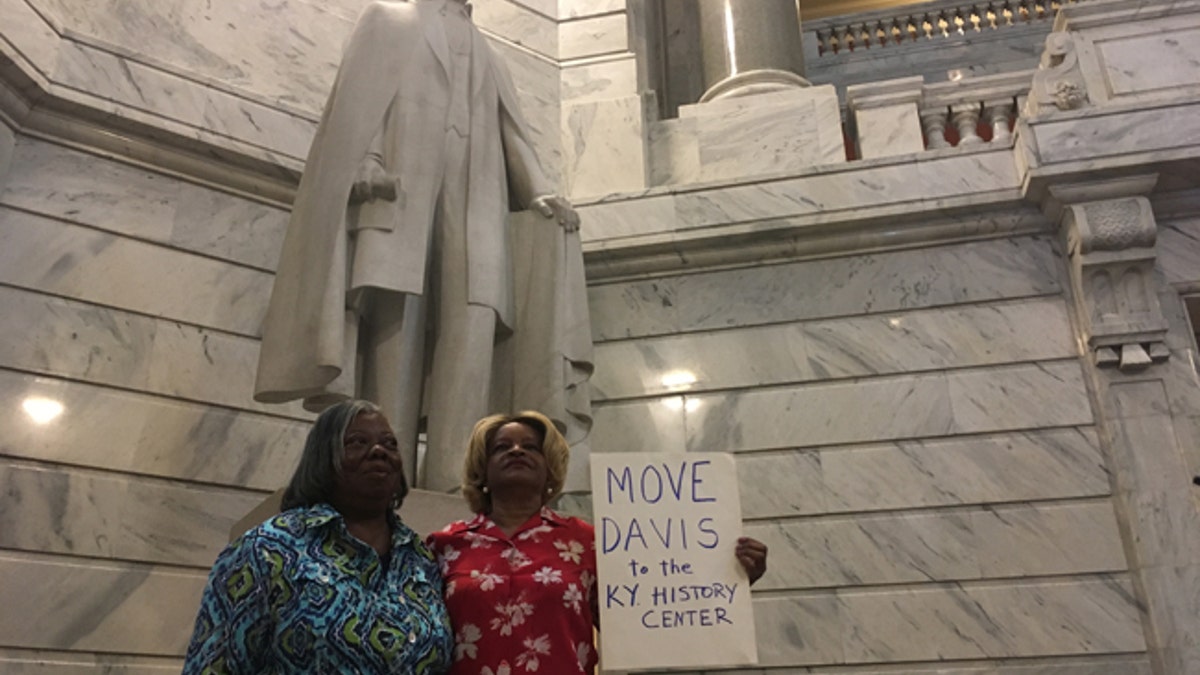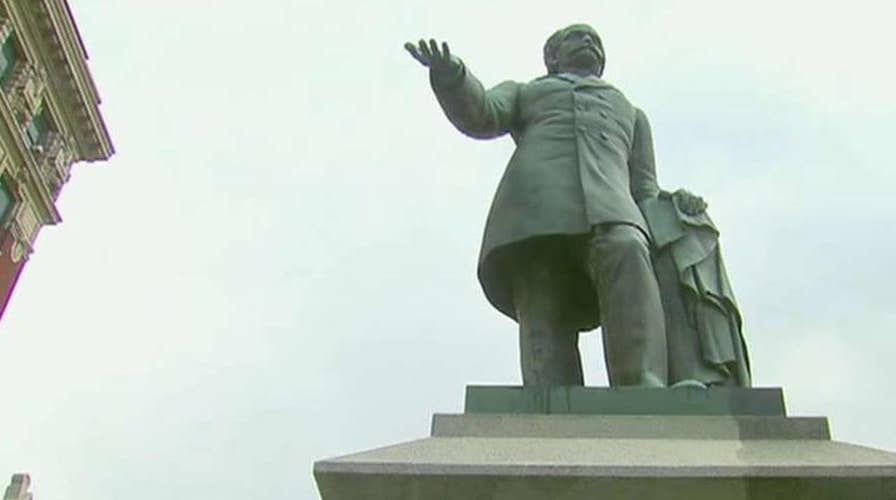Kentucky residents weigh in on Confederate statue debate
Matt Finn reports from Lexington, Kentucky
More than 100 people gathered in the rotunda of Kentucky’s cavernous state Capitol on Wednesday to call for the removal of a statue of Jefferson Davis, the first and only president of the Confederacy.
Charlene Holloway was one of those present near the 15-foot-tall marble statue that's stood in Kentucky’s Capitol since 1936. Although most people focused on Davis’ racist past, Holloway thought of her great-great-grandmother, one of 15 slaves at a home in Christian County, who was “forced to have children” by her white owner.
“I'm very upset that a statue [is] here that depicts racism, bigotry, hatred for people of color, a statue that believes in dehumanizing people,” she said.
Kentucky never joined the Confederacy, but it was filled with Confederate sympathizers who set up a shadow government for a time in the western part of the state. In the aftermath of the Civil War, the state legislature also rejected ratifying the amendments to the U.S. Constitution that banned slavery and guaranteed black people the right to vote.

Charlene Holloway, right, and Gracie Lewis stand in front of a statue of Jefferson Davis in the Kentucky Capitol. (AP)
WHICH CONFEDERATE STATUES WERE REMOVED? A RUNNING LIST
The legislature finally ratified those amendments in 1976, more than 100 years after the Civil War ended and a decade after Kentucky became the first southern state to sign its own state-level civil rights act in 1966.
"It's been a mixed bag," Raoul Cunningham, president of the Kentucky chapter of the NAACP, said of the state's history.
The NAACP and other groups have tried twice before to remove the statue from the Capitol, including in 2015 in the aftermath of the racially-motivated murder of nine black people at a South Carolina church. That year, the Historic Properties Advisory Commission voted 7-2 to keep the statue, but to provide it with more historical context.
In 2015, when he was the Republican nominee for governor, Matt Bevin said the statue should be removed and placed in a museum, “not on government property.”
But his views have changed since then. Bevin has said removing Confederate symbols would be “a very dangerous precedent” because “we basically have revisionist history and pretend it didn't happen.”
“The governor's cause for concern is misplaced,” Democratic state Rep. Reginald Meeks said. “Revisionist history is in the very marble and stone of these monuments. Governor, in the presence of all that is good and sacred in this honorable hall, you have the responsibility, as a man of God and a parent, to raise above the politics of the past and to lift our commonwealth to a higher moral state.”
The Historic Properties Advisory Commission governs the statues in the Capitol, and its members are appointed by the governor. Earlier this month, Bevin cited the commission's 2015 vote when asked if the statue should stay.
“No one individual should be making these decisions,” he said. “We've got to remember where we came from, we've got to know who we are. We better have a sense of vision of purpose as to where we are going and we should be very thoughtful with respect to what we think of as the right symbols to show that.”
The Associated Press contributed to this story.






















